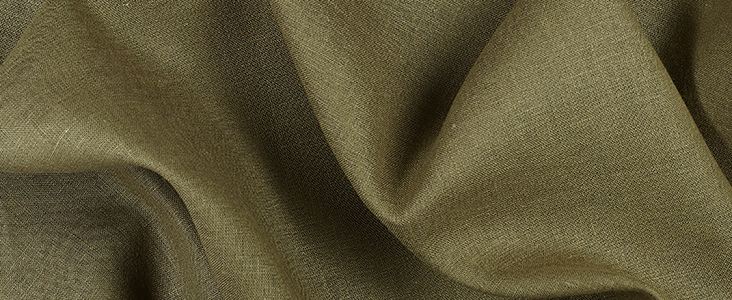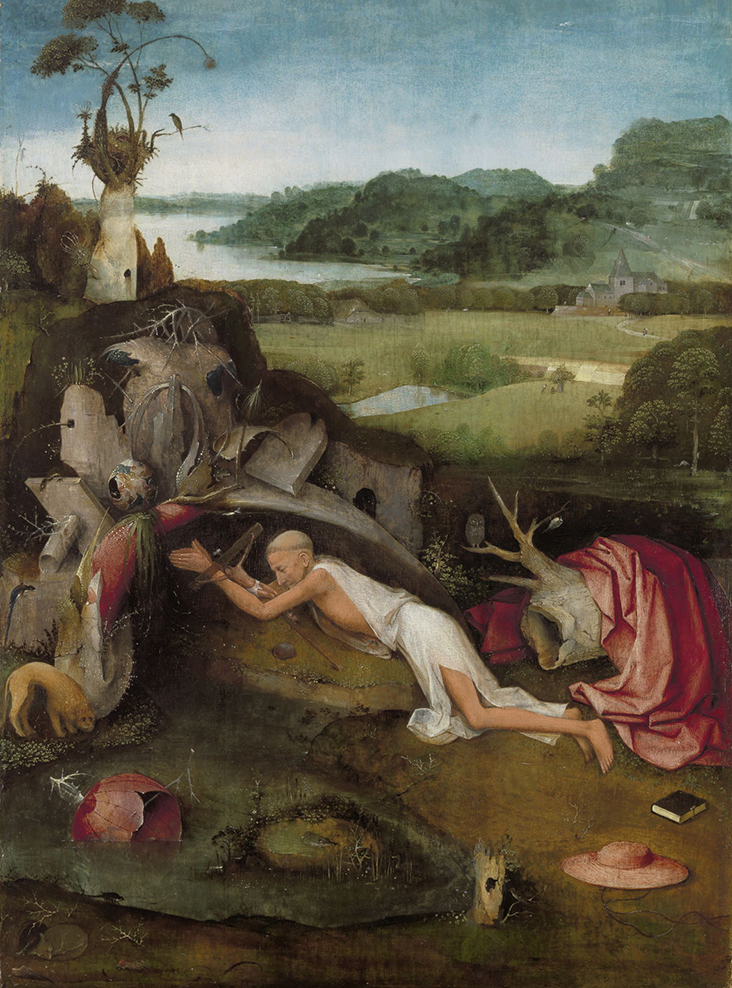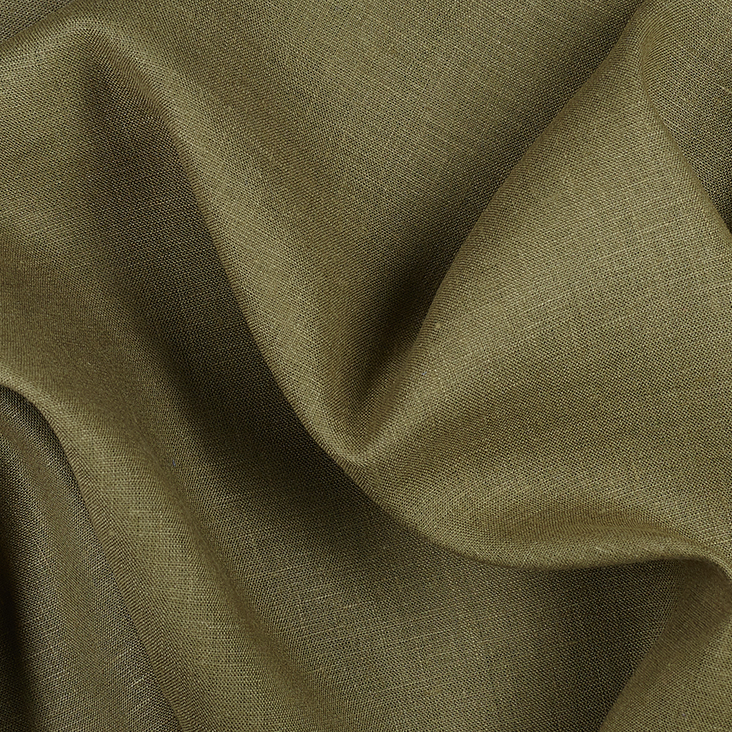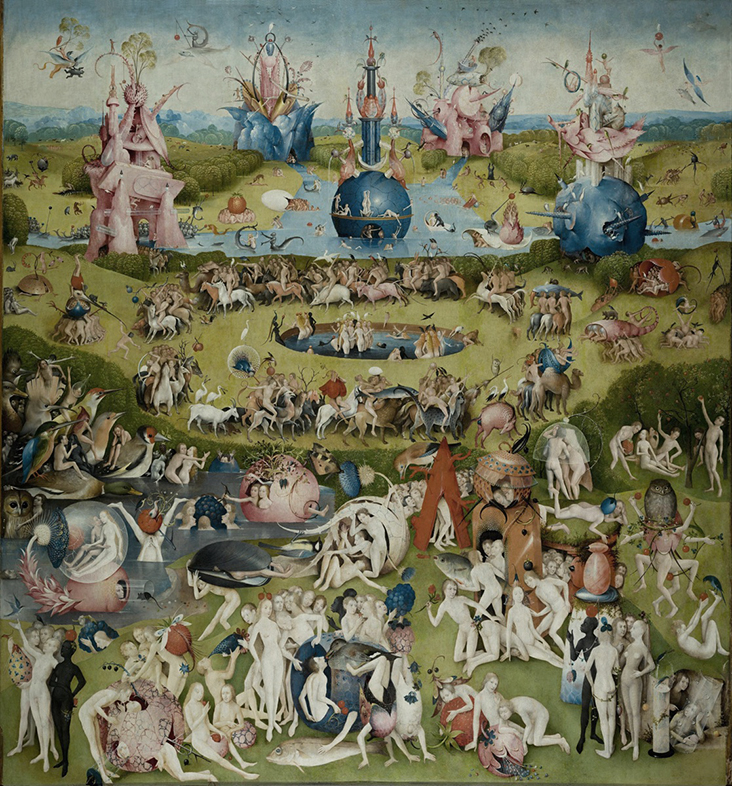FS Colour Series: Olive Branch inspired by Hieronymus Bosch’s Garden of Eden
OLIVE BRANCH Linen’s earthy green rolls outwards across Bosch’s fantastical scenes, forming endless pastures of muddy grass and fervent trees that evoke the utopian paradise of Eden. His paintings are brimming with moralising stories about life, love, loss and repentance, as impish humans, birds, fish, insects and machines form mini-dramas that play out in a complex myriad of theatrical sequence. But it is the paradisiacal, olive green landscape that unites them, a soft neutral with golden undertones, which, when bedecked with small patches of glistening jewel tones, sparkles with vitality and life.
There is some speculation about Bosch’s exact date of birth, but scholars have guessed it was around 1450. Born into a prosperous family of painters whose name was van Aken, Bosch was raised, and spent his entire life in the medieval town of s-Hertogenbosch in the Netherlands, later adopting an abbreviated version of the town’s name as his own. Relatively little is known about Bosch’s early training as an artist, which only serves to lend greater mystery and intrigue to his artworks, but many have assumed that a family member taught him how to paint. Some have suggested his later work reveals an awareness of classical Roman art and the early Renaissance, although his vision of the world was, and remains today, entirely unique.
Much like the artists of his day, Bosch was preoccupied with creating tableaus, or stories that unfold before the viewer, but in contrast with his contemporaries, he moved beyond a literal, visual interpretation of Biblical texts, taking flight with the original story and delving into ludicrous, absurd and sometimes horrific scenes with an underlying moralising message about man’s atonement for his sins. His striking, decadent use of colour aided in amplifying the drama of his message, while transforming his relatively small paintings into precious, sparkling gems.
By the 1470s Bosch had secured a reputation as a painter and was running his own educational workshop in s-Hertogenbosch. In, The Adoration of the Magi, 1470-75, colours are carefully balanced to create depth and space, as icy, whispering shades of blue dissolve into the wandering hills in the distance, allowing the dense warmth of the honeyed, glowing green ground to take centre stage. Sparking against it are small patches of vivid, royal red, which bring the whole scene alive with flickering flames of colour.
Greens are softer and more muted in the shadowy, uneasy, Saint Jerome at Prayer, 1485-95, fading from warm olive tones in the foreground, where shocking red fabric encircles the troubled, Biblical figure, to minty blue shades as they recede into the distant, white sky beyond. Just five years later, Bosch made what would become his most famous artwork yet, and perhaps one of the most iconic and reproduced artworks of all time. The triptych, The Garden of Earthly Delights, 1500 is a riotous feast of colour and light, representing Adam and Eve amidst the garden of Eden as it is created, celebrated and eventually destroyed through man’s indulgence and self-absorption. Earthy greens roll out like a thick, luxurious carpet across the first two scenes, creating the wondrous glow of a fertile paradise, sprinkled with a whole manner of colourful, lively creatures, before falling into the darkness of hell.
The same colour scheme and narrative format is echoed in the lavish three-panelled, The Haywain Triptych, 1516, as paradise is created, exploited and destroyed, and the hay becomes a metaphor for man’s obsession with material possessions. A delicious array of greens intermingle with one another throughout the entire triptych, hitting high notes with a pale apple tone, which falls gradually into syrupy, indulgent toffee hues, forming entrancing pockets of darkness, where paradise begins to unravel.























































Leave a comment